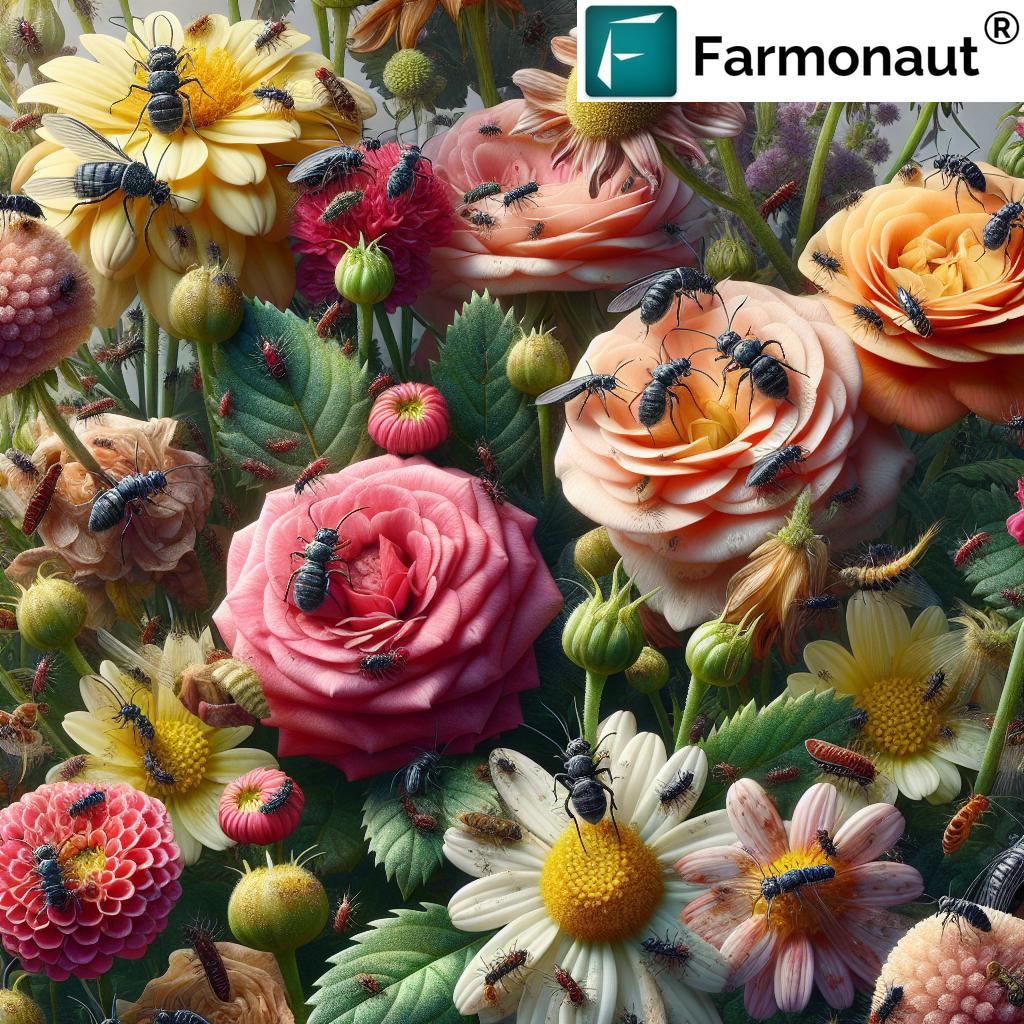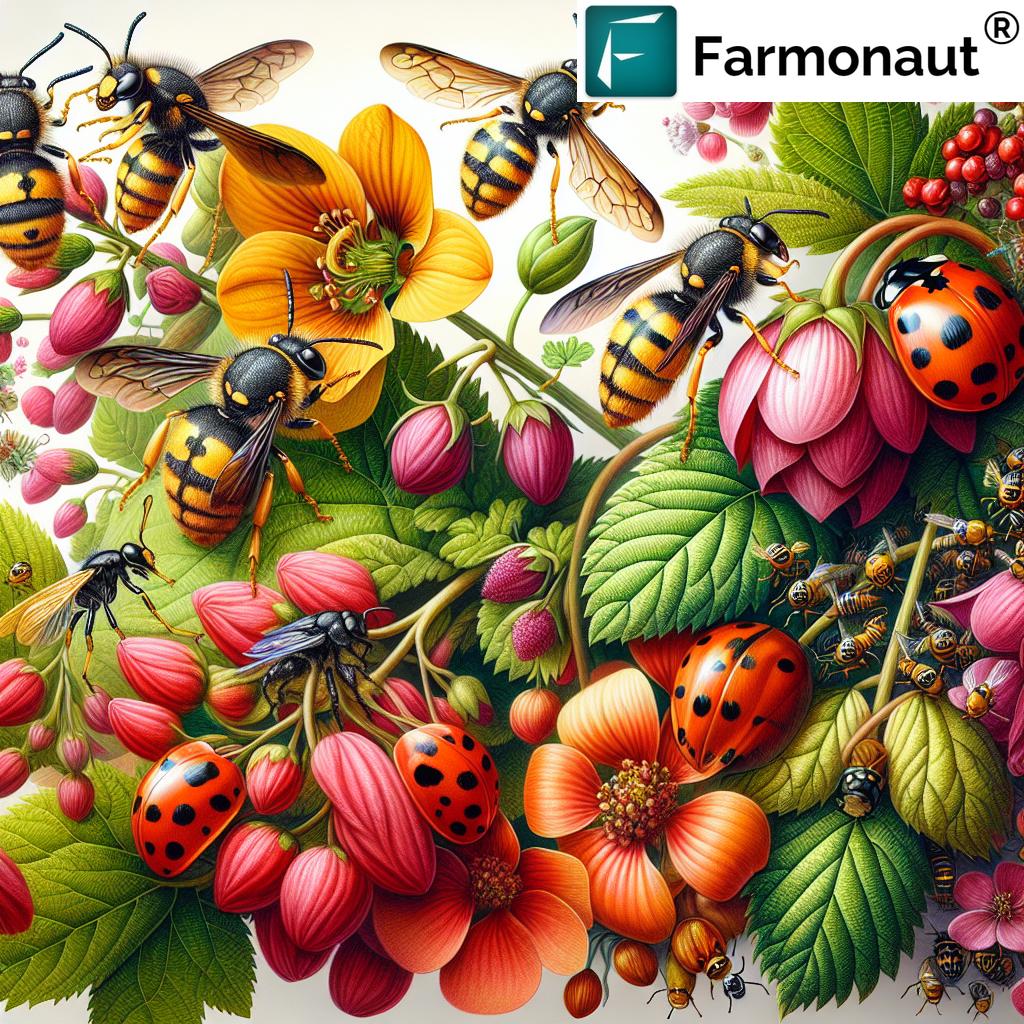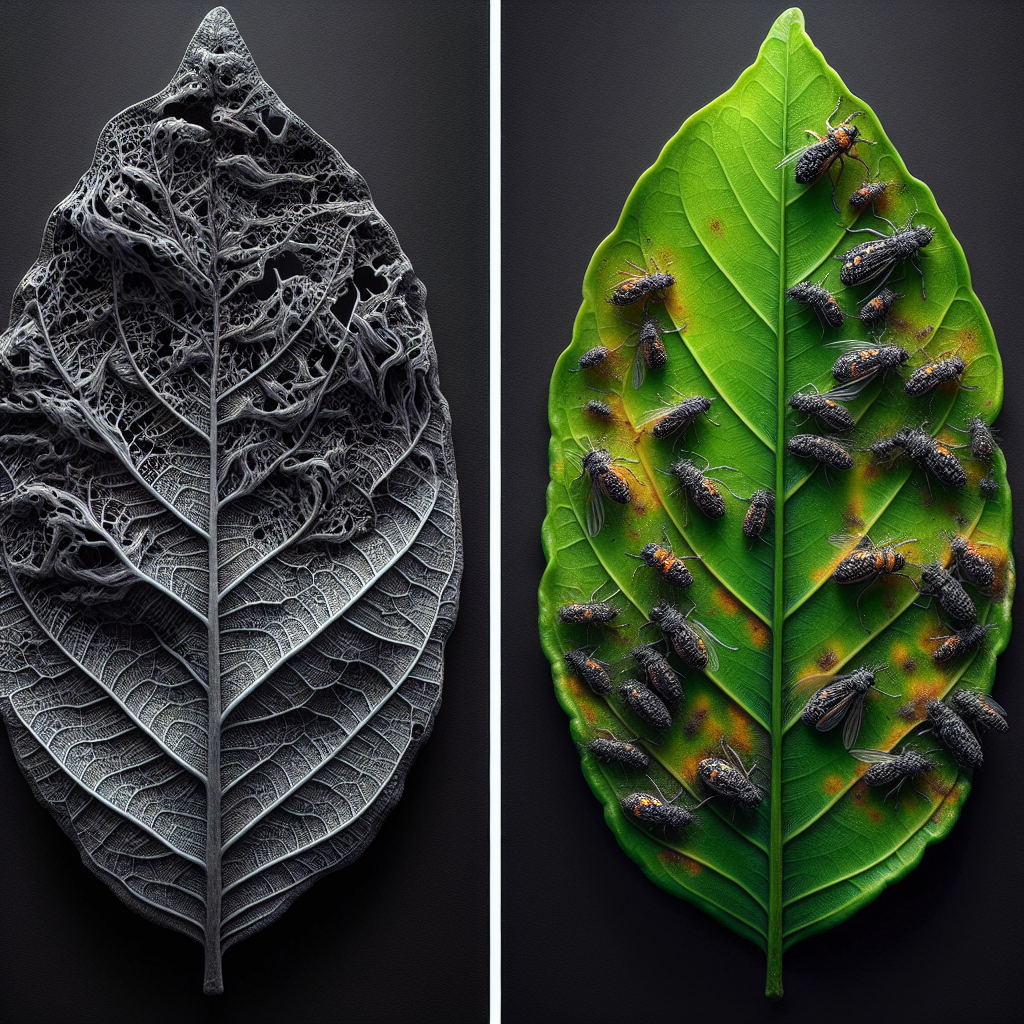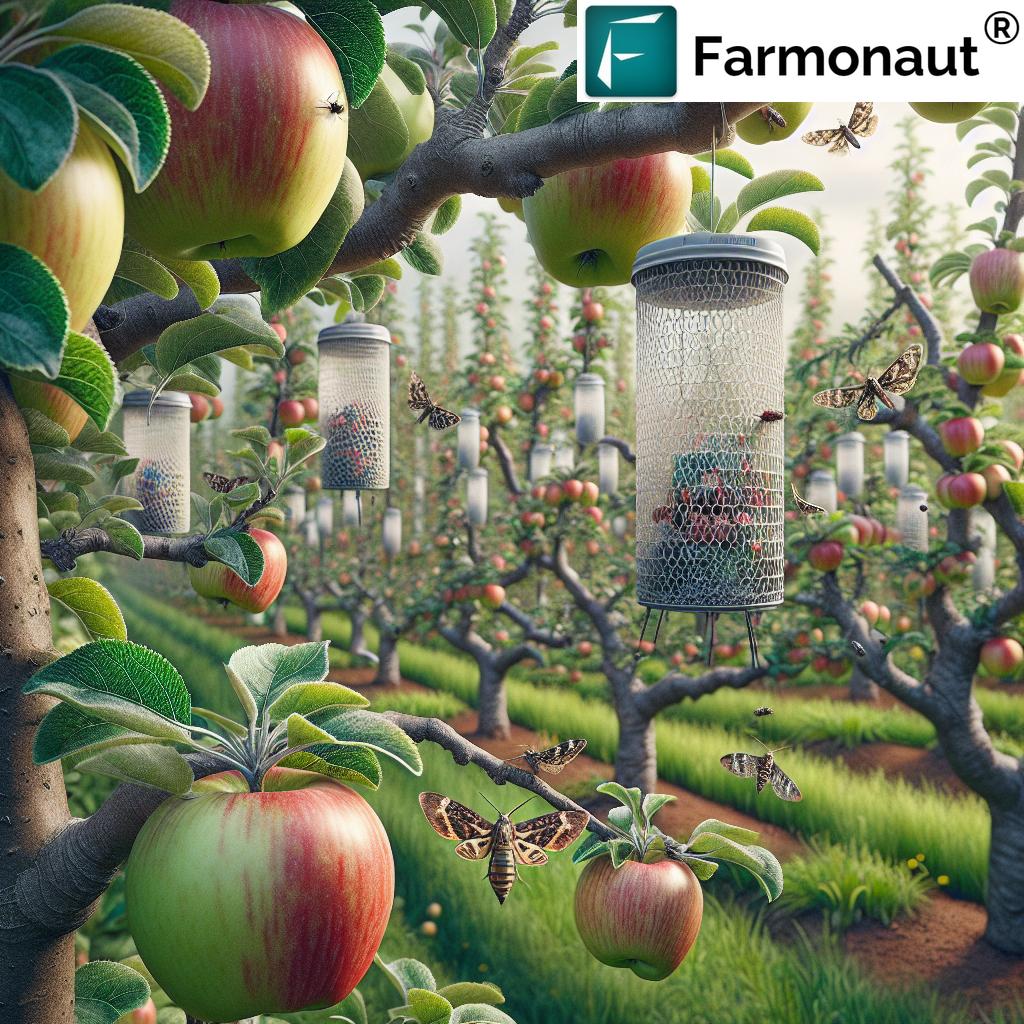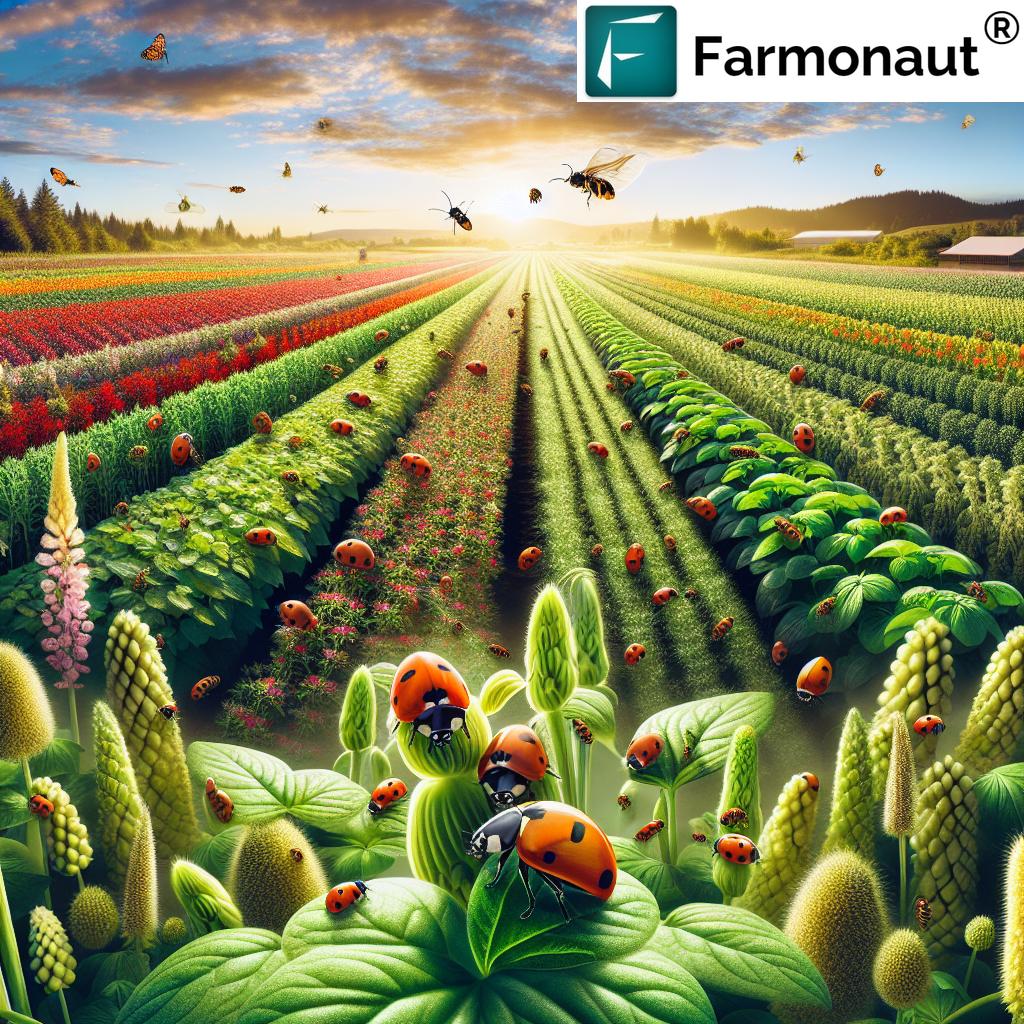Tiny Black Bugs on Flowers: 7 Proven Pest Control Strategies
“Tiny black bugs can reduce flower yield by up to 30% if left unmanaged, impacting overall plant health significantly.”
Table of Contents
- Introduction
- Identifying Tiny Black Bugs on Flowers
- Common Flower Pests: Bug Identification
- Impact on Agriculture and Horticulture
- Pest Identification and Control Strategy Table
- 7 Proven Pest Control Strategies for Tiny Black Bugs on Flowers
- How Farmonaut Supports Effective Pest Management
- Preventive Measures: Protecting Ornamental Plants and Crops
- Farmonaut Pricing and Subscription Information
- Frequently Asked Questions
- Conclusion
Introduction
Tiny black bugs on flowers are more than just an aesthetic nuisance; they pose a significant threat to the health and yields of plants. Farmers, gardeners, and horticulturists worldwide have experienced the frustration caused by these common flower pests. From reduced yields to the spread of plant viruses, these tiny insects can wreak havoc if left unchecked.
Effective pest management in gardens, greenhouses, or farmlands starts with identifying the pests accurately, understanding their impact, and using an integrated control approach. In this comprehensive guide, we will explore in detail how to identify tiny black bugs on flowers, the species most frequently involved, and seven proven strategies for managing and controlling pest infestations. We will also touch on how Farmonaut—a leader in satellite-driven agricultural technology—supports data-driven, cost-effective precision agriculture, including pest monitoring and prevention.
Whether you’re managing ornamental plants, flowers for agribusiness, or crops on large-scale farms, these strategies will help you effectively reduce pest populations, protect plant vitality, and promote sustainable plant growth.
Identifying Tiny Black Bugs on Flowers
Tiny black bugs on flowers are a common sight in gardens, crop fields, and ornamental displays. Their presence can indicate a looming issue with pest infestations that may compromise plant health and flower beauty. These pests vary from harmful aphids and thrips to beneficial predators like minute pirate bugs. Identifying these insects accurately is crucial for selecting the proper response—whether it’s eradication or conservation.
- Look for clusters: Many black bugs, such as Aphis fabae (black aphids), congregate on new growth, buds, or the undersides of leaves.
- Observe plant damage: Symptoms may include distorted growth, yellowing leaves, silver streaks, or a sticky honeydew residue that encourages sooty mold.
- Check for feeding marks: Thrips cause silvery or brown marks as they suck out plant cell contents, while harlequin bugs (with striking red-and-black markings) leave stippled spots or white patches.
- Monitor for beneficial species: Not all tiny black bugs are harmful. For example, Orius spp. (minute pirate bugs) assist in natural pest control for flowers and should be preserved where possible.
Accurate black aphids identification, distinction between thrips on plants and harmless insects, and understanding which bugs cause damage will empower you to deploy the right management strategies at the right time.
Common Tiny Black Bugs on Flowers: Bug Identification and Pest Management
Knowing the key species of tiny black bugs on flowers is integral to effective pest management in gardens and fields. Each pest has unique characteristics, behavior, and impact on plants:
1. Black Aphids (Aphis fabae)
- Appearance: Small, soft-bodied, black insects clustering on new shoots, buds, or leaf undersides.
- Feeding behavior: Piercing plant tissues, extracting sap; results in distorted growth, yellowing, reduced yields, and honeydew production.
- Complications: Honeydew encourages sooty mold (a black, sticky fungus) that further reduces plant vitality.
- Relevance: Poses a significant concern for beans, peas, and many ornamentals.
More on Aphis fabae on Wikipedia.
2. Thrips (Thrips simplex)
- Appearance: Slender, about 2mm in length; black, dark brown, or sometimes yellowish.
- Feeding behavior: Piercing and sucking plant cell contents, causing silver streaks, browning, and deformed flowers.
- Viral transmission: Thrips also transmit viruses—a severe problem for both crop and ornamental plant health.
3. Minute Pirate Bugs (Orius spp.)
- Appearance: Very small, oval, black or black-and-white predators.
- Ecological role: Feed on pests like aphids and thrips, reducing their numbers naturally—their presence signals natural pest control for flowers.
Minute Pirate Bug information.
4. Harlequin Bugs (Murgantia histrionica)
- Appearance: 3/8-inch long, black bodies with vibrant red markings.
- Feeding habits: Feed on a variety of plants, causing stippled white spots, wilted leaves; particularly destructive to cruciferous crops like kale and cabbage.
For a deep dive on black aphids identification and how real-time technology empowers pest management, explore our solution: Crop Plantation and Forest Advisory. This innovative tool provides satellite-driven insights for early pest detection in flowers and ornamental plants.
“Implementing 7 proven pest control strategies can decrease tiny black bug infestations on flowers by over 80%.”
Impact on Agriculture and Horticulture: Why Pest Management Matters
The impact of tiny black bugs on flowers in both agriculture and horticulture is profound. Overlooking even minor infestations can lead to cascading problems:
- Reduced Aesthetic Value:
- Flowers and leaf damage from aphids, thrips, and harlequin bugs decrease a plant’s visual appeal—critical for ornamental plants marketed for landscaping or floristry.
- Decreased Yields:
- Aphid infestations can stunt growth and reduce flower and seed production in crops such as beans and peas.
- Transmission of Plant Diseases:
- Thrips are notorious for spreading plant viruses, creating further complexities in crops management.
- Secondary Fungal Problems:
- Pests that excrete honeydew (such as aphids) create conducive environments for sooty mold, which can suffocate foliage and further hinder plant growth.
The negative impact of tiny black bugs can decimate entire beds of flowers or crops if left untreated, making prompt and systematic control essential for both productivity and profitability.
Pest Identification and Control Strategy Table
To help you quickly recognize common flower pests and choose effective strategies to control them, refer to this detailed table:
| Bug Name | Estimated Size (mm) | Common Signs of Infestation | Associated Plant Species | Effectiveness of Control Strategy (Est. %) | Recommended Farmonaut Product/Action |
|---|---|---|---|---|---|
| Black Aphids (Aphis fabae) | 2-3 | Clusters on buds/new growth; sticky honeydew; sooty mold; distorted leaves | Beans, peas, sunflowers, ornamentals | 80% (biological + chemical controls) | Satellite Crop Health Monitoring + Jeevn AI Advisory |
| Thrips (Thrips simplex) | 1-2 | Silver/brown streaks, deformed flowers, yellowing, viral symptoms | Gladiolus, lilies, beans, various ornamentals | 75% (insecticidal soap/neem oil + monitoring) | Plant Stress Detection via Satellite + Timely Alerts |
| Minute Pirate Bug (Orius spp.) | 2-3 | Feeds on other pests; low direct plant damage; presence of dead thrips/aphids | Flowers, vegetables, most crops | 90% (conservation/attraction as beneficial insect) | Promote Biodiversity via Planting Strategy Insights |
| Harlequin Bug (Murgantia histrionica) | 8-10 | Stippled/white spots, wilted leaves, especially in cruciferous crops | Kale, cabbage, broccoli, ornamentals | 70% (handpicking, neem oil, physical exclusion) | Farm Management Planning (Crop Rotation/Records) |
| Flea Beetles (various spp.) | 1-3 | Tiny holes in leaves, dark specks on foliage, hopping movement | Cruciferous crops, flowers, vegetables | 65% (row covers, organic sprays) | Crop Monitoring with Automated Alerts |
For developers and agritech businesses: Explore the Farmonaut Satellite & Weather API or browse the API Developer Docs for seamless integration of real-time crop, pest, and resource data into your own platforms.
7 Proven Pest Control Strategies for Tiny Black Bugs on Flowers
Tackling tiny black bugs on flowers demands a multi-pronged, integrated pest management approach. Below are seven evidence-backed strategies—many of which combine cultural, physical, biological, and chemical controls—to both limit bug populations and safeguard plant health:
1. Cultural Control Practices
- Maintain Healthy Plants: Vigorous, properly watered and fertilized plants recover faster from pest damage and are less attractive to infestations.
- Proper Spacing: Avoid overcrowding. Ensure adequate air circulation among flowers to prevent moist, pest-friendly conditions.
- Encourage Beneficial Insects: Incorporate companion plants, flowering herbs, and native species to draw ladybugs, lacewings, and minute pirate bugs—all key predators of aphids and thrips. This forms the foundation of natural pest control for flowers.
2. Physical Control Methods
- Handpicking: For small or local infestations, manually remove aphids, harlequin bugs, and egg clusters from flower buds and foliage—especially critical for high-value ornamentals.
- Water Spray: Use a strong, focused stream of water to dislodge bugs from leaves and buds. This reduces populations quickly, especially for aphids.
- Physical Barriers: Row covers or floating garden fabrics can prevent pest access, notably useful for small flower beds and young, susceptible plants.
3. Biological Controls: Using Nature’s Allies
- Introduce Beneficial Insects: Purchase and release ladybugs, green lacewings, or Orius spp. within the garden setting.
- Parasitic Wasps: Some wasps (Aphidius colemani, Encarsia formosa) lay eggs inside aphids, controlling their populations from within. They are especially effective in greenhouses or enclosed spaces.
- Maintain Natural Predator Populations: Avoid broad-spectrum insecticides that might harm beneficials. Foster habitats (hedgerows, wildflower strips) for ongoing biological control.
For ongoing support in biological and cultural controls, we recommend leveraging Farmonaut’s Crop Plantation Advisory services, which provide real-time alerts on crop stress and pest outbreaks, allowing for immediate intervention.
4. Chemical Controls: When and How to Use Safely
- Insecticidal Soaps: Safe for most plants and effective against soft-bodied pests like aphids and thrips. Always follow manufacturer’s dosage and apply in the cooler parts of the day to avoid leaf burn.
- Neem Oil: Disrupts pest life cycles, inhibits feeding, and acts as an antifeedant. It’s biodegradable and only mildly toxic to beneficials if used as directed.
- Pyrethrins: Derived from chrysanthemum flowers; used for heavy infestations when prompt knockdown is needed, but apply cautiously to protect beneficials.
- Systemic Insecticides: Reserve for severe, unmanageable infestations. Use judiciously, given their potential to disrupt pollinators, beneficials, and soil health.
Our Jeevn AI Advisory recommends the most suitable chemical vs biological pest control strategy for your crops or ornamental plants based on satellite-driven diagnostics and recent scientific data.
5. Integrated Pest Management (IPM)
- Combine multiple strategies: Implement cultural, physical, biological, and—when necessary—chemical controls in a holistic, ongoing program.
- Regular Monitoring: Early detection of pest populations raises the effectiveness of all methods.
Integrated Pest Management is central to Farmonaut’s mission, leveraging technology and data for continuous pest surveillance and adaptive management.
6. Use of Resistant Varieties
- Select resistant cultivars: Where available, opt for plant varieties that have demonstrated resistance to specific pests (e.g., aphids or thrips).
- Crop Rotation: Especially for cruciferous vegetables, rotate crops annually to reduce persistent pest populations in soil and debris.
Farmonaut’s Large Scale Farm Management Tool assists in strategic crop planning, tracing previous pest issues, and optimizing variety selection for maximum resistance.
7. Cleanliness and Hygiene in Garden Management
- Remove Debris and Weeds: Old flowers, plant debris, and unmanaged weeds serve as hosts for pest eggs and larvae. Commit to regular garden clean-up and disposal.
- Sanitize Tools: Prevent the transmission of pest eggs and plant viruses by cleaning gardening tools after use.
For businesses interested in the traceability of crop health and pest management decisions, Farmonaut offers a Blockchain-Based Traceability Solution—pinpointing pest issues, interventions, and outcomes with transparency all the way through the supply chain.
For farms working towards environmental sustainability while fighting pest infestations, explore Farmonaut’s Carbon Footprinting Tools to ensure your pest control strategies align with sustainable, eco-friendly practices.
Managing large machinery or application schedules for pest controls? Leverage Fleet Management to ensure timely, efficient treatment across wide areas, reducing operational costs and improving application efficacy.
How Farmonaut Supports Effective Pest Management
As a technology-driven agricultural solutions provider, we at Farmonaut empower farmers, horticulturists, and agribusinesses with advanced, affordable tools for detecting, monitoring, and managing pest infestations in flowers, crops, and ornamental plants:
- Real-Time Crop Health Monitoring: Our satellite-based platform delivers NDVI maps and vegetation indices to identify early signs of pest stress, often before symptoms are visible.
- Jeevn AI Advisory System: Delivers data-driven alerts on pest risks, tailored recommendations for chemical vs biological pest control, and prevention strategies for your local region.
- Automated Pest Alerts: Our technology pinpoints hotspots where pest outbreaks likely originate, so you can apply targeted management for reduced chemical input and improved outcomes.
- Fleet & Resource Management: For commercial growers, we streamline machine use, staff scheduling, and record-keeping for pest control interventions, improving efficacy and compliance.
- Blockchain-enabled Traceability: Maintain an irrefutable log of all pest management activities—from early warnings to final treatments—for market access and compliance.
- Affordable Subscription Access: Our tiered pricing ensures that small farms, cooperatives, and large agribusinesses alike can access world-class technology, advice, and record-keeping.
Using Farmonaut means smarter, timely, and better-targeted pest control decisions—whether facing aphids, thrips, or any tiny black bugs on flowers.
Preventive Measures: Protecting Ornamental Plants and Crops from Common Flower Pests
While response strategies are crucial, prevention remains the best form of pest management. Incorporate these practices to reduce the risk of future infestations:
- Regular Inspection: Walk your garden or field weekly, examining new growth, leaf undersides, and flower buds—especially during humid or rainy weather, which can promote rapid pest population growth.
- Use Resistant Varieties: Select flowers, vegetables, and ornamentals bred for resistance to aphids, thrips, and other common flower pests.
- Maintain Clean Borders: Remove weeds and debris from field or garden edges, since neglected spaces harbor overwintering pests.
- Proper Watering: Avoid both drought stress and waterlogging; healthy roots support stronger pest resistance above-ground.
- Fertilize Wisely: Over-fertilization, especially nitrogen, can promote lush but weak growth that’s more susceptible to aphids and other sap-feeders.
- Disinfect Tools: Especially after working in a pest-infested area, cleaning tools is vital to preventing accidental spread of pest eggs or plant viruses.
- Space Plants Properly: As outlined under cultural practices, proper spacing ensures airflow and reduces microclimates that favor pest buildup.
Set up Farmonaut’s real-time crop health alerts on our Android, iOS, or web app for early-warning detection of pest-related stress in your fields or flower displays—giving you instant recommendations for prevention and treatment.
Farmonaut Pricing and Subscription Information
Choose the right plan for your operation. Whether managing a backyard garden, a commercial nursery, or large-scale farms, access precise pest alerts, satellite crop data, and personalized recommendations affordably:
Frequently Asked Questions: Tiny Black Bugs on Flowers
Q1. What are the most common black bugs found on flowers?
A: The most common tiny black bugs on flowers include black aphids (Aphis fabae), thrips (Thrips simplex), minute pirate bugs (Orius spp.), and harlequin bugs (Murgantia histrionica). The presence and damage they cause vary widely across geographic regions and plant varieties.
Q2. How do I distinguish between harmful and beneficial tiny black bugs?
A: Harmful pests often cluster in large numbers, feed on plant sap or foliage (causing visible damage), and sometimes produce sticky residue (honeydew). Beneficial insects, such as Orius spp. and ladybugs, prey on other insect pests and typically do not harm healthy plants.
Q3. What are the signs of an aphid infestation on flowers?
A: Signs include distorted or curled leaves, yellowing, sticky residue, presence of sooty mold, and dense clusters on new growth or buds.
Q4. What’s the safest method to get rid of aphids on flowers?
A: For minor infestations, use a strong jet of water to remove aphids, introduce beneficial predators like ladybugs, or apply insecticidal soaps or neem oil as natural, low-toxicity controls.
Q5. Can thrips spread viruses?
A: Yes, thrips on plants can transmit viruses such as Tomato Spotted Wilt Virus and Iris Yellow Spot Virus, which can significantly affect both yield and plant health.
Q6. How can I make my ornamental plants less attractive to pests?
A: Use resistant varieties, minimize excess fertilization (especially with nitrogen), provide good air circulation by proper plant spacing, and keep the area free of weeds and debris.
Q7. Why is early pest detection important?
A: Early detection allows for targeted, lower-impact interventions and prevents pests from reaching population levels where significant damage and rapid spread occur.
Conclusion
Tiny black bugs on flowers—including aphids, thrips, and other common flower pests—pose a genuine risk to plant health, market value, and overall yields. Success starts with accurate identification, continuous monitoring, and using a portfolio of proven pest control strategies as outlined in this guide.
By employing a mix of cultural, physical, biological, and, where absolutely necessary, chemical controls, you can naturally reduce infestations and only intervene with chemicals when essential. Remember that early action, cleanliness, encouraging beneficial insects, and choosing resistant varieties are critical to long-term pest prevention.
With Farmonaut’s data-driven technologies for crop monitoring, AI-driven advisory, traceability, and resource management, you can proactively identify, track, and battle pest problems with confidence—whether you’re a farmer, professional grower, or passionate home gardener.
For more expert tools on pest management, real-time crop monitoring, and precision agriculture, try our web app, or download the mobile application for Android and iOS today.
Looking to automate crop and pest monitoring at scale? Start with the Farmonaut Web App, connect through our API for business, or refer to our Developer Docs.
Maintain beautiful, healthy, and productive flowers—one smart decision at a time!


